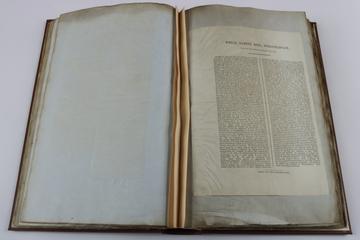
Museum of Practical Geology
The Museum of Practical Geology was founded in 1838 at Craig’s Court, Whitehall at the behest of Sir Henry de la Beche, recent founder of the Geological Survey. Within two years, the rooms in Craig’s Court proved insufficient to house the rapidly expanding collections so new premises were required. A design for a new building was commissioned from James Pennethorne on Piccadilly and Jermyn Street. The building housed, as well as galleries, a library, lecture theatre, and offices and laboratories for the Survey. It was constructed between 1845 and 1849 and was opened by Prince Albert in May 1851.
In 1855, the Museum was already running out of space again. A Select Committee of the House of Commons were already recommending that the collection move over to Exhibition Road, where the newly built Natural History Museum, Science Museum and the Victoria and Albert Museum were prospering, to become more ‘conveniently situated’.
In the late 1920s, the attendance at the Museum of Practical Geology had dropped to fewer than 100 visitors a day. Structural investigations led to the discovery of serious problems with the fabric of the Museum. There were large cracks in several of the cast iron roof beams possibly caused by bombs dropped on Piccadilly during World War I. Also, the foundations had shifted. Construction on a new site in Exhibition Road, next to the Natural History Museum, was started in 1929.
The collections moved to the new museum in 1934 which was opened in turn in 1935. That same year, the old museum was demolished to make way for Simpsons of Piccadilly, the famous department store. That building still stands today and is currently occupied by Waterstone’s bookshop. The library and the Survey have moved to Keyworth in Nottinghamshire. The museum’s extensive and still growing collections form part of the Visions of Earth galleries in the Natural History Museum.